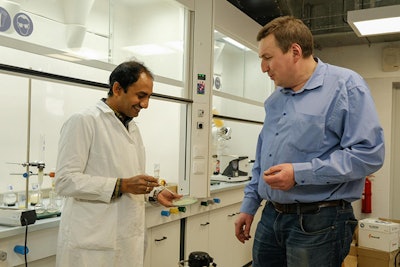
Researchers from India and Russia have developed an edible food film made with a seaweed polymer that could be used to improve the sustainability of poultry, meat and seafood packaging.
“We have created three types of food films based on the well-known naturally occurring seaweed biopolymer, sodium alginate,” said Rammohan Aluru, senior researcher in the Organic synthesis laboratory at Ural Federal University and co-author of the paper, said in a statement.
The films are designed to be water-soluble and dissolve by almost 90% within 24 hours.
Antioxidant plus film-forming properties
The research team cross-linked sodium alginate molecules, which has film-forming properties, with a natural antioxidant called ferulic acid.
"Sodium alginate is an auspicious carbohydrate macromolecule that has the potential film-forming properties upon hydrolysis and abundantly existed in cell walls as a mixture of various salts. The greatest advantage of sodium alginate is that it performs as liquid-gel in an aqueous medium,” Aluru explained.
The combination results in a food film that is strong and rigid. The antioxidant components can even help prolong the shelf-life of the food products.
The edible food film can be manufactured at any polymer production plant, requiring no special equipment.
A description of the research and results of the experiments were published in the Journal of Food Engineering.
Consumers want more sustainable packaging
Finding ways to reduce plastic packaging waste is a hot topic with consumers. In a 2019 survey from Innova Market Insights, about half of those surveyed indicated they would pay more for products from companies dedicated to reducing plastic waste.
Sustainable packaging designs must overcome several barriers in design and manufacturing. Production costs for sustainable options can be up to 25% higher than tradition packaging. They must also meet the needs of finicky consumers who place a high value on both sustainability and convenience.
Like what you just read? Sign up now for free to receive the Poultry Future Newsletter.


















